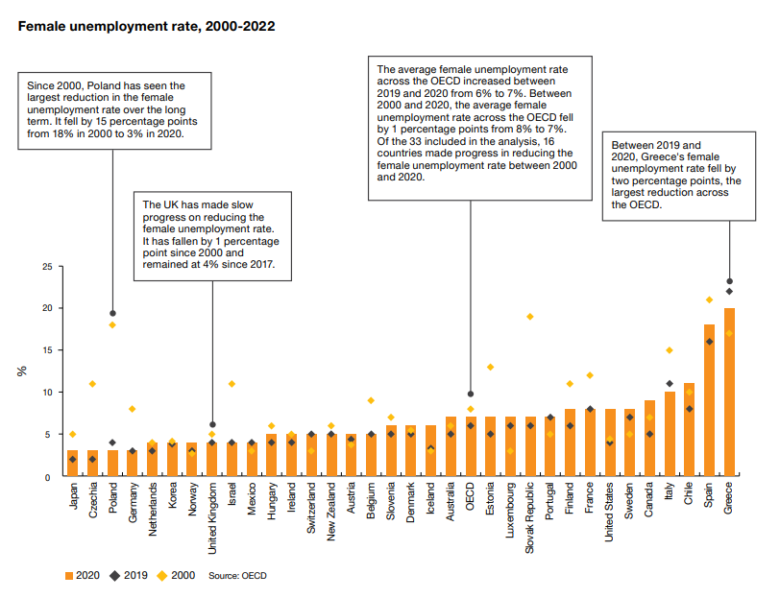Pandemic sets back women’s equality in the workplace by years

Bad news on International Women’s Day: Female employees, in particular, were negatively affected by the corona pandemic. For the first time in the 20-year history of PwC’s Women in Work Index, the situation of women in the labor market deteriorated significantly. The number of working women has fallen and many have dropped out of the labor market, according to the analysis by the consultancy.
Over the past decade, OECD (Organisation for Economic Co-operation and Development) countries have made significant progress in terms of women’s economic participation. However, according to OECD data, the corona pandemic threw back equality in the labor market by two years. According to calculations in the PwC study, 5.1 million more women were unemployed worldwide in 2020 than would have been in a case without the pandemic.

Women are often heavily burdened with childcare
Many unpaid jobs, such as homeschooling, caring, and housework, are still largely done by women. Mothers are three times more likely than fathers to take on either most or all of the additional unpaid caring responsibilities caused by school or childcare closures.
Nicole Prieller, New World New Skills Leader at PwC Austria, says: “The COVID-19 pandemic has made the goal of gender equality in the world of work even more challenging.” She, therefore, calls on governments and companies to take the lead to take into account the needs of women in work and society.
In view of the slow progress in previous years, according to the broadcast, it will still be decades before equality between women and men in the workplace is achieved. The global employment rate for men is currently 80 percent. It will be another 33 years before women achieve this. Statistically, it will be another 63 years before the gender pay gap is closed.
Women are severely underrepresented in growing sectors of the economy
The current analysis by PwC shows that the transition to sustainable management will lead to more jobs in 15 out of 20 sectors by 2030. The largest increases are expected in utilities, construction, and manufacturing – sectors where women are severely underrepresented. And the employment gap between men and women in these sectors is likely to continue to widen in the future if female workers are not actively encouraged.
Equality Benefits
Ultimately, advancing gender equality brings many benefits, as the Women in Work Index shows. Increasing female employment across the OECD can add $6 trillion a year to countries’ gross domestic product. At the same time, closing the gender pay gap can add $2 trillion per year to women’s earnings across the OECD. No surprise that the United Nations’ theme of the IWD 2022 is “Gender equality today for a sustainable tomorrow“.





























